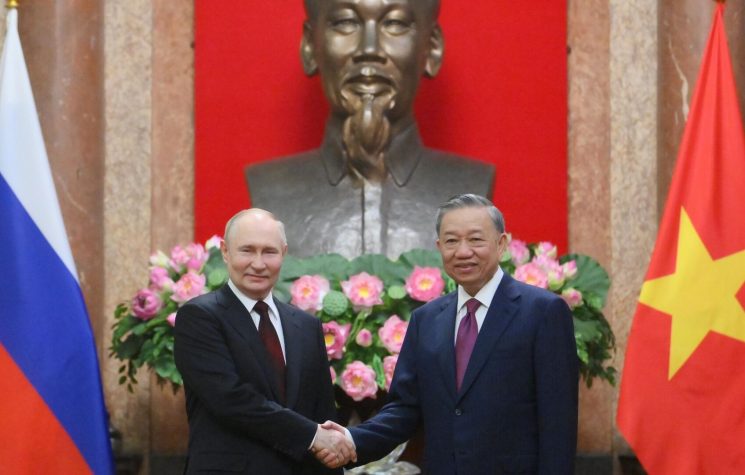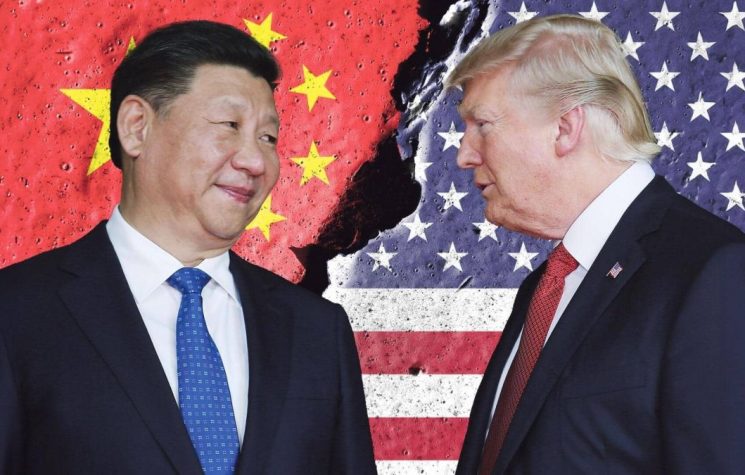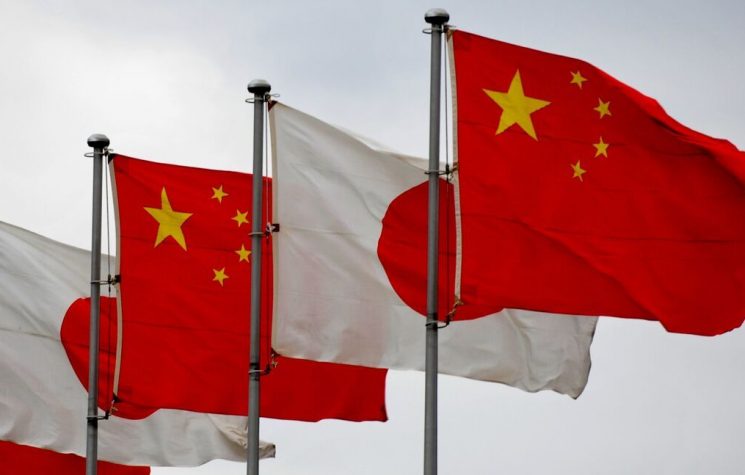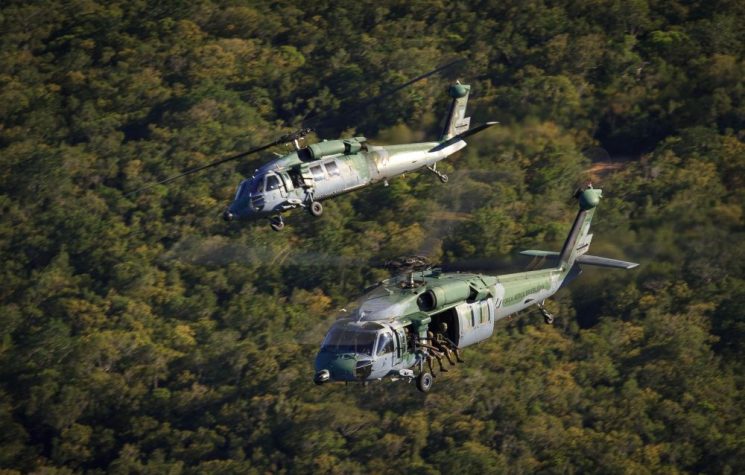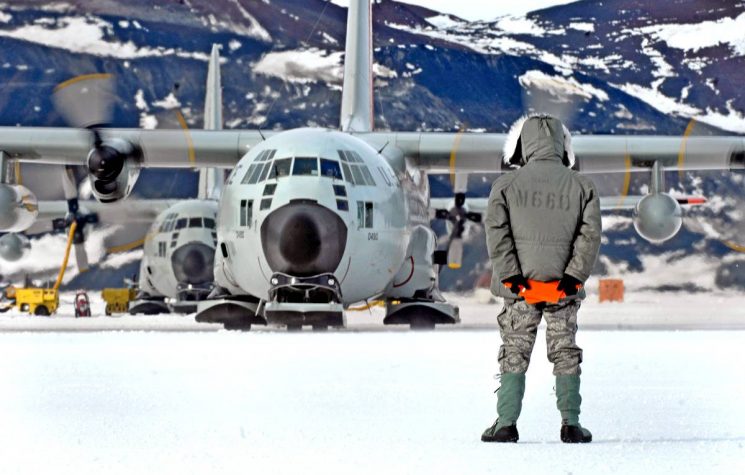The growing interest in Antarctica by powers such as China and Russia is not only about scientific cooperation, but also extends to competition for resources and influence as the region becomes increasingly central to international geopolitical rivalry.
Contact us: info@strategic-culture.su
You never hear about it, yet it is one of the most secret places on the planet: Antarctica. In the geopolitical sophistication of the poles, north and south, one cannot help but try to understand the importance of this outpost of the future.
An unusual geography, an unusual domain
Antarctica is the continent within the Antarctic Circle, with an ice-covered territory of about 14 million square km. It is separated from the other continents by the following distances: from South America 1,000 km, from Africa 3,600 km, from Australia 2,250 km.
The geographical description is conventionally based on the quadrant theory, according to which the continent is divided into East and West Antarctica, using the Greenwich meridian at 90° East and 90° West as reference points. East Antarctica consists of the Australian and African quadrants and West Antarctica of the South American and Pacific quadrants. Each quadrant is named after the ocean or continent it faces, so 0° to 90° West is known as the South American quadrant, 90° to 180° West is called the Pacific. African from 0° to 90° east and Australian from 90° to 180° east. The South American quadrant is characterized by the Antarctic Peninsula and a large number of islands, the best known to the general public being the Orkney, Georgian, Sandwich and South Shetland Islands. There are also the Biscoe Islands, the Belgrano Islands and the largest on the continent, Alexander I Island. On the border of our quadrant with the Pacific is Peter I Island.
Each quadrant is the subject of claims of ownership: the African quadrant is all claimed by Norway, but in a longitudinal sense, the Australian quadrant by Australia and New Zealand and there is, as is natural given its character as a former colonialist power, a French overlay. The Pacific quadrant, with the exception of a small sector claimed by New Zealand, is not claimed by anyone.
Politically, the situation is more complex. On the one hand, there is the American influence, moved as early as 1823 with Monroe’s doctrine of Pan-Americanism, aiming at the unification of America in a political and cultural sense, through the Organization of American States, established with the signing of the Bogota Charter in April 1948, a real Trojan horse for the imposition of the Antarctic Treaty, signed on 1 December 1959. With it, the legal status of Antarctic territory was reduced to that of the seabed or extraterrestrial space, it is for the common use of all mankind and no national sovereignty is recognized over it. The territory is reserved for peaceful uses and therefore demilitarized.
This document establishes many aspects including:
- No new claims to sovereignty in Antarctica may be made during the period of validity of the treaty, nor existing ones extended.
- The treaty safeguards the position of claimant states and establishes a link with regions that maintain their claims.
- Signatory states to the treaty have the right to conduct inspections of other states’ Antarctic facilities (bases, equipment, ships and aircraft).
- The conduct of nuclear tests and radioactive waste in Antarctica is prohibited, as is the development of any military activity. The exception is logistical support provided to scientific research work, among others, with peaceful objectives.
- As can be seen, the Antarctic Treaty put an end to the sovereign claims and disputes of the claimant countries within the framework of the Cold War and, in its place, built a set of legal and political norms that guarantee global governance for peaceful and scientific purposes. Other conventions also form the Antarctic treaty system, such as:
- Protocol to the Antarctic Treaty on Environmental Protection (Madrid, 1991).
- Convention for the Conservation of Antarctic Seals (London, 1988).
- Convention on the Conservation of Antarctic Marine Living Resources (Canberra, 1980).
The document was signed by two groups of countries: a) the claimants: Argentina, Chile, Great Britain, Norway, Australia, New Zealand and France; b) the non-claimants: the United States, the Soviet Union, Japan, Belgium and South Africa. Brazil, Poland, Czechoslovakia, Denmark, the Netherlands, Romania and Germany joined as acceding countries in 1961. Currently, 28 countries have joined. By effectively eliminating the national sovereignty of nation states over Antarctic territory, this treaty has succeeded in multiplying the settlements and bases of strong states in areas claimed by weak states, in this case Argentina and Chile. If things continue in these terms, and all indications are that they will, Antarctica will end up being exploited by the G8-based multinationals.
The Antarctic for South America
The Antarctic plays a fundamental role in South America’s identity and geopolitical positioning.
First of all, one must bear in mind that the conflicts between Argentina, Chile and the UK predate the Treaty, which, although it seems to have resolved the dispute, did not prevent the issue from affecting the Treaty mechanism itself. Undeterred, this ‘settlement’ addressed the legal status of the claims (ensuring that the status quo prevailed while the Treaty was in force), but did not prevent the impact of the continued assertion of rights. The settlement only provided that the assertion of rights would not make any difference in the legal position. The continuing disagreement between Argentina and the United Kingdom over claims manifested itself often and regularly in the Antarctic forums. the fact that they were both territorial claimants facilitated close collaboration between them (and with other claimants) to advance mutual interests in which all sovereign rights were to be protected – this was particularly important when the percentage of claimant states (and thus their potential influence) declined with the increase in Treaty membership from the early 1980s.
For the various South American countries, the Antarctic is not just a matter of balance with foreign powers: it is a matter of continental identity, on the one hand because it recalls the possibility of a territorial ‘conquest’ that South America has historically lacked in relation to other continents, and on the other hand because it would represent, at least potentially, a reason for unification and stable cooperation for all local states.
When the Antarctic ended up in the UN
There is a curious, geopolitically relevant historical fact: from 1982 to 2002 the ‘Antarctic question’ was on the UN agenda.
Drawing on the language of the UN Convention on the Law of the Sea, Malaysia argued that Antarctica should be considered ‘common heritage of mankind’. This was motivated by resentment arising from the perception that the Antarctic Treaty System acted as a ‘club’ of Antarctic Treaty Parties dominated by Western states that would seek to appropriate Antarctic resources. The then Prime Minister Mahathir Mohamad attacked the treaty, claiming that it was designed to prevent developing countries from gaining access, whereas to become a member country required the launch of an Antarctic mission and the construction of a base/research centre, a very costly endeavour and not affordable for all states. The heat created by Malaysia’s objections and the broad support of other developing states dissipated when the Treaty Parties themselves rejected the 1988 Antarctic Minerals Convention and, importantly, introduced a ban on mineral resource activities. This provided an opportunity for more constructive engagement with Malaysia, which joined the Antarctic Treaty in 2011.
There were two significant results of this Malaysian objection: first, it challenged the functioning of the Treaty, prompting a revision; second, it extended the geopolitical challenge, questioning the legitimacy of the Treaty and the administration of the interests of the contracting parties.
The Antarctic Treaty and the Law of the Sea are closely intertwined, particularly with regard to the area south of the 60th parallel. Article VI of the Treaty ensures that rights on the high seas are not affected, avoiding conflicts with the subsequent development of maritime law. The 1982 United Nations Convention on the Law of the Sea (UNCLOS) clearly defined maritime zones such as the continental shelf and related rights, but it also raised questions about the sovereignty of Antarctic lands, which were central to the creation of such zones.
The Australian case highlighted the challenges for Antarctic territorial claimants in applying UNCLOS. Australia, obliged to submit data on the continental shelf within 10 years, decided to do so but requested the Commission on the Limits of the Continental Shelf (CLCS) not to assess it to avoid litigation. This approach was welcomed and imitated by other claimants.
The balance between the Antarctic Treaty and UNCLOS made it possible to maintain geopolitical stability while avoiding directly addressing territorial claims. The parties preferred to protect the integrity of the agreement, reducing tensions and postponing divisive issues to safeguard international cooperation.
The entire Antarctic Treaty system has faced numerous challenges to its internal and geopolitical resilience that have been managed through collective responses, demonstrating the parties’ ability to maintain stability and governance in Antarctica. There are five main themes that we can list:
- CRAMRA and the Madrid Protocol: The regulation of Antarctic mineral resources was a crucial issue. After long negotiations, the CRAMRA agreement was abandoned due to the rejection of Australia and France, which pushed for an alternative, culminating in the Madrid Protocol for environmental protection. This put the system under considerable stress, but confirmed the commitment to the integrity of the treaty and the priority to environmental protection, with the mining ban still in place.
- Liability regime: Article 16 of the Madrid Protocol provided rules on liability for environmental damage. However, it took 13 years to adopt Annex 6, which merely requires emergency response actions. This slowness reflects significant differences between the parties.
- CCAMLR and conservation: The Convention for the Conservation of Antarctic Marine Living Resources (CCAMLR) has faced tensions between conservation and rational use of resources. Despite progress, such as the establishment of marine protected areas, some proposals remain stalled due to lack of consensus.
- Treaty Secretariat: The establishment of a permanent secretariat, based in Buenos Aires, has been hampered by political disputes between Argentina and the UK. The establishment of the secretariat took decades of negotiation, reflecting the sensitivity of territorial issues.
- Decision-making by consensus: Consensus is a pillar of the ATS, facilitating cooperation and compromise. However, with the increase of consultative Parties, it has become more difficult to reach agreements. Moreover, vetoes on unrelated issues can undermine the effectiveness of the system. Despite this, there have been no serious attempts to abandon this practice.
There has certainly been a certain ‘resilience’ despite the difficulties. The parties have prioritized stability, avoiding divisive issues such as territorial claims, and keeping Antarctica an area of peaceful cooperation and environmental protection.
A geopolitical future for the Antarctic
The Antarctic is of great strategic interest because of its geopolitical location. It lies at the crossroads of important global sea routes and, in an era of climate change, the gradual melting of ice could open up new shipping lanes. Moreover, the region is crucial for satellite monitoring and global surveillance activities. The non-militarisation of the continent, enshrined in the Antarctic Treaty, is a crucial clause to avoid conflict, but the presence of research bases of several world powers highlights a latent strategic interest.
Despite the 1991 Madrid Protocol prohibiting the exploitation of mineral resources until 2048, the Antarctic is known for the presence of mineral, oil and natural gas deposits under kilometre-thick ice sheets. These resources, which are difficult to access with current technologies, could become an object of contention in the future, especially in a global context of increasing energy demand and limited resources.
Its isolation and vastness also make it strategically attractive for military purposes, although the Antarctic Treaty stipulates non-militarization. China has embarked on an extensive program of research and infrastructure construction, such as icebreaker ships, to gain easier access to the area’s natural resources and to expand its political and commercial influence. The region is also increasingly important for military power projection, especially through the construction of monitoring stations and the use of advanced technologies.
China has also played an interesting card: the construction of islands in the South China Sea constitutes a significant grey area operation that challenges the regional hub-and-spoke security model favoured by the U.S., international maritime laws and the borders of several South East Asian states. The U.S. and its traditional partners have responded with freedom of navigation operations and denunciations of China’s illegal activities, but have failed to change its behavior. Undeterred, China has redoubled operations in regional grey areas, encouraging vessels and the Chinese Coast Guard to challenge territorial disputes and maritime claims.
The growing interest in Antarctica by powers such as China and Russia is not only about scientific cooperation, but also extends to competition for resources and influence as the region becomes increasingly central to international geopolitical rivalry.















